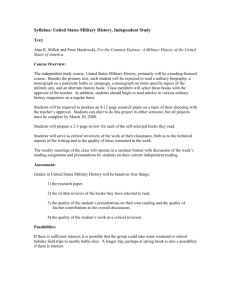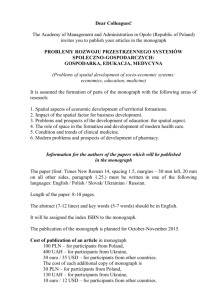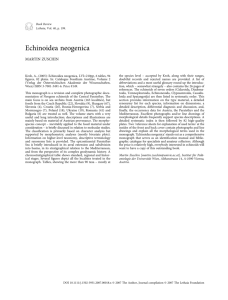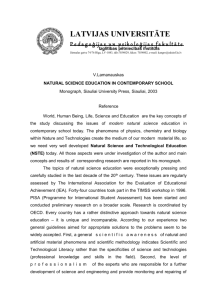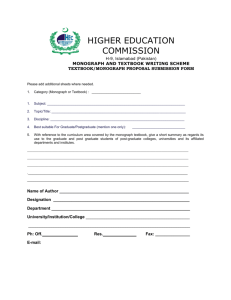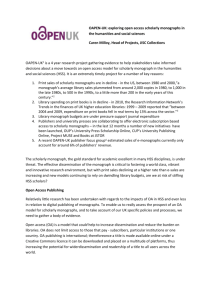HCM - November 2014 - British Pharmacopoeia
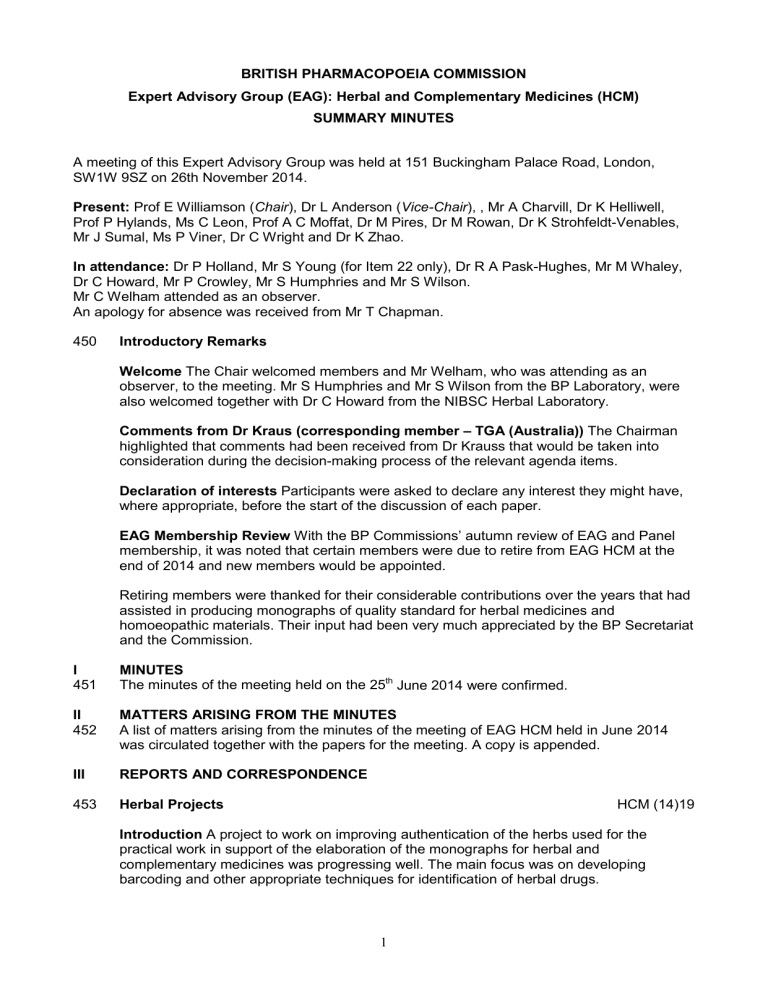
BRITISH PHARMACOPOEIA COMMISSION
Expert Advisory Group (EAG): Herbal and Complementary Medicines (HCM)
SUMMARY MINUTES
A meeting of this Expert Advisory Group was held at 151 Buckingham Palace Road, London,
SW1W 9SZ on 26th November 2014.
Present: Prof E Williamson ( Chair ), Dr L Anderson ( Vice-Chair ), , Mr A Charvill, Dr K Helliwell,
Prof P Hylands, Ms C Leon, Prof A C Moffat, Dr M Pires, Dr M Rowan, Dr K Strohfeldt-Venables,
Mr J Sumal, Ms P Viner, Dr C Wright and Dr K Zhao.
In attendance: Dr P Holland, Mr S Young (for Item 22 only), Dr R A Pask-Hughes, Mr M Whaley,
Dr C Howard, Mr P Crowley, Mr S Humphries and Mr S Wilson.
Mr C Welham attended as an observer.
An apology for absence was received from Mr T Chapman.
450 Introductory Remarks
Welcome The Chair welcomed members and Mr Welham, who was attending as an observer, to the meeting. Mr S Humphries and Mr S Wilson from the BP Laboratory, were also welcomed together with Dr C Howard from the NIBSC Herbal Laboratory.
Comments from Dr Kraus (corresponding member – TGA (Australia)) The Chairman highlighted that comments had been received from Dr Krauss that would be taken into consideration during the decision-making process of the relevant agenda items.
Declaration of interests Participants were asked to declare any interest they might have, where appropriate, before the start of the discussion of each paper.
EAG Membership Review With the BP Commissions’ autumn review of EAG and Panel membership, it was noted that certain members were due to retire from EAG HCM at the end of 2014 and new members would be appointed.
Retiring members were thanked for their considerable contributions over the years that had assisted in producing monographs of quality standard for herbal medicines and homoeopathic materials. Their input had been very much appreciated by the BP Secretariat and the Commission.
I MINUTES
451 The minutes of the meeting held on the 25 th
June 2014 were confirmed.
II MATTERS ARISING FROM THE MINUTES
452 A list of matters arising from the minutes of the meeting of EAG HCM held in June 2014 was circulated together with the papers for the meeting. A copy is appended.
III REPORTS AND CORRESPONDENCE
453 Herbal Projects
Introduction
HCM (14)19
A project to work on improving authentication of the herbs used for the practical work in support of the elaboration of the monographs for herbal and complementary medicines was progressing well. The main focus was on developing barcoding and other appropriate techniques for identification of herbal drugs.
1
454 DNA Barcoding: General Principles HCM (14)20
DNA Barcoding as an identification test within the British Pharmacopoeia
It was reported the work had progressed towards a method to identify plants at the species level using the barcode regions. As a result of the work, a best practise for DNA identification of each herbal material should be produced that could be written into a test method for the British Pharmacopoeia, if deemed to add value to the monograph.
455 Quillaia Bark HCM (14)21
A monograph for Quillaia Bark had been published in the 8 th
Edition of Ph. Eur. and consequently had been included in the BP. Members were informed that material complying with the current BP monograph was appropriate for the preparation of Quillaia Liquid
Extract, whereas material that complied with the Ph. Eur.
monograph with the controlled content of saponins content was used as an adjuvant in the production of vaccines.
Consequently it was agreed that both monographs were necessary and that the BP monograph should be retained in the BP.
It was suggested that the BP monograph title might need to be made more explicit concerning the purpose of the material, such as changing to Quillaia for Herbal Drug
Preparations. Since the BP monograph for Quillaia relied on morphological identification only, it was agreed that, if applicable, the Ph. Eur.
TLC identification method should be included in the BP monograph.
456 Establishing BPHRS HCM (14)22
Introduction Members discussed the practicality of working towards establishing BPHRSs.
An indication of the types of BPHRSs that could be established and possible target organisations were noted. Provision of herbal reference materials and substances could be of assistance in microscopical and chromatographic analyses. The overall outcome from the discussions was support for the principle of establishment of HRSs. However the matter should be approached on a case by case basis with reference to the value for each monograph.
It was noted that the EDQM already supplied herbal reference substances that were cited in
23 published Ph. Eur . monographs, such as that for Black Cohosh.
457 Structure and Content of BP and Ph. Eur. Monographs for
Herbal Drugs used in Traditional Herbal Medicines HCM (14)23
The concerns raised by the herbal industry on the practicality of complying with published pharmacopoeial monographs for herbs used in traditional medicines had been previously discussed and the legal requirement for assays in licensed or registered finished products had been acknowledged. It had been agreed that the inclusion of assays should be considered on a case-by-case basis. In the majority of cases where BP monographs were being elaborated the identification section and microbial quality of the item were considered critical. If deemed necessary at a later date, published monographs could be revised to include an assay.
458 Intended use of Herbal Drugs and Monograph Compliance HCM (14)24
A question had arisen about how a monograph for a herbal drug might take into account the intended use of the drug, such as where a herbal drug was to be incorporated into an authorised herbal medicinal product (licensed or registered) and where the same herbal drug was used as a traditional remedy but not incorporated into an authorised herbal medicinal product.
2
In both cases the herbal drug needed, if tested, to comply with the monograph. The matter as to whether all the tests in a monograph were appropriate to demonstrate the quality of the drug for its intended use was discussed briefly. If traditional remedies were considered as ‘medicinal products’, the regulators would expect the herbal ingredients to fulfil the requirements and principles stated in the General Monograph for Unlicensed Medicines, that was ‘where such a monograph is available, the medicinal substance and excipients must comply with the specific monograph requirements of the Pharmacopoeia’. However it was acknowledged that the requirements of the general and specific monographs of the pharmacopoeia were not necessarily comprehensive, although the published BP monographs were considered ‘fit for purpose’ with relevant specifications, such as establishing two Quillaia monographs, where each monograph served a different use.
459 Peppermint Preparations HCM (14) 25
Gastro-Resistant Peppermint Oil Capsules : Chromatographic profile It had been realised that the limits given in the monograph for Gastro-Resistant Peppermint Oil
Capsules had been based on those in the Ph. Eur . method in the oil monograph prior to revision of the oil monograph limits. The manufacturers would be contacted with a view to revision of the limits.
Peppermint Spirit Since the current monograph had no test for identification and there were no chromatographic profile limits on the oil components, the producers were to be contacted concerning possible application of the chromatographic profile test as specified in the Ph. Eur. monograph for Peppermint Oil to the Peppermint Spirit monograph.
Concentrated Peppermint Emulsion No identification, tests or oil analysis were included in the current monograph. In view of the chloroform content of the extemporaneous preparation and agreement that the extemporaneous section should be deleted it was agreed that the monograph should be omitted until such time that suitable testing was available to assist in the quality control of the product, which was still used in the UK. The producers would be asked if the chromatographic profile test in the monograph for Ph. Eur.
Peppermint Oil was applicable to the monograph.
460 Standardised Senna Leaf Dry Extract HCM (14) 26
At the previous meeting a problem had been reported with the test for Loss on drying in the
Ph . Eur . monograph for Standardised Senna Leaf Dry Extract . Samples of the dry extract
461 had failed to meet the loss on drying limit of ‘Maximum 5.0 per cent.’ and the extract had appeared to be significantly altered by the heating process. A semi-micro determination of water had been suggested. Further data on the problem was being sought.
BP Work Programme HCM(14) 27
The monograph for Holy Basil Leaf was due to be published in the BP 2016. Other Ocimum species were to be investigated, in particular closely related species, such as Ocimum gratissimum. The latter species might be mistaken for O. tenuiflorum due to its similarity in appearance and use as a medicinal plant in its own right under a similar trade Ayurvedic name. Consequently analyses were required to determine the similarity of chemical content between the two species.
462 Indian National Biodiversity Act HCM (14)28
For Information The procurement from India of good quality samples of herbs used in
Ayurvedic medicines contributed to the development of quality monographs. The matter had become difficult in the past two years due to the implementation of the Biodiversity Act of India 2002, the implementation of which had taken a significant period of time. With
3
V establishment of the Act it was anticipated that the procurement of samples from India would be re-established.
MONOGRAPHS IN PROGRESS IV
463 Clivers (Cleavers) HCM (14)29
The draft monograph would be included in a future BP publication subject to comments from stakeholders and to resolution of any outstanding points.
464 Holy Basil Leaf HCM (14)30
The draft monograph would be included in a future BP publication subject to comments from stakeholders and to resolution of any outstanding points.
465 Himalayan Cedar HCM(14)31
The draft monograph would be included in a future BP publication subject to comments from stakeholders and to resolution of any outstanding points.
467 Phyllanthus Amarus HCM (14)32
The draft monograph would be included in a future BP publication subject to comments from stakeholders and to resolution of any outstanding points.
468 Tribulus Terrestris HCM (14)33
The draft monograph would be included in a future BP publication subject to comments from stakeholders and to resolution of any outstanding points.
469 Tinospora Cordifolia Stem HCM(14)34
The draft monograph would be included in a future BP publication subject to comments from stakeholders and to resolution of any outstanding points.
471 Vitex Negundo Leaf HCM (14)35
The draft monograph would be included in a future BP publication subject to comments from stakeholders and to resolution of any outstanding points.
REVISION OF MONOGRAPHS
472 Chloroform-containing preparations HCM (14)36
In view of decisions made by the CHM, the BP Commission had agreed that monographs, such as those with extemporaneous specifications that contained chloroform, should be revised to omit reference to chloroform. The monographs for Acid Gentian Mixture, Alkali
Gentian Mixture and Concentrated Peppermint Emulsion were to be revised to omit the extemporaneous preparation specifications that included Double Strength Chloroform
Water.
Concentrated Peppermint Emulsion With deletion of the section relating to the extemporaneous preparation a definition only remained in the monograph. It was agreed that the monograph should be omitted from the BP 2016 until such a time that quality checks were available that could be included in the monograph ( see also minute 459 ).
4
VI EUROPEAN PHARMACOPOEIA
473 Groups 13A, 13B, TCM and Homoeopathic Working Parties HMM and HOM
Members were informed that at the March 2015 Session of the European Pharmacopoeia
Commission the nomination of Mr Paul Anderson (G R Lane Health Products Ltd) as the
UK member of Group of Experts 13B had been accepted.
VII ANY OTHER BUSINESS
None.
Date of next meetings
Thursday, 25 th
of June 2015
Wednesday, 25 November 2015
5
MATTERS ARISING FROM PREVIOUS MEETINGS OTHER THAN THOSE MENTIONED ON
THE AGENDA
Minute 335: Chrysanthemum
Flower
To be progressed at the earliest opportunity.
Minute 357.6 Spearmint Oil
Minute 358: Adhatoda Vasica
Root (Malabar Nut)
The action concerning revision of the oil monograph would be addressed at the earliest opportunity.
To be progressed at the earliest opportunity.
Minute 359: Cyperus Rotundus To be progressed at the earliest opportunity.
Minute 362: Myristica Fragrans In view of the results from Kew further samples are being sought for laboratory analysis.
HCM meeting December 2013
Minute 405.3 Opium Tincture
Minute 411: HPTLC – New approach
Minute 446 Dill Oil
Revision of the monograph would be investigated at the appropriate time.
The BP Lab standard conditions will be compared against the draft Ph. Eur.
HPTLC text when available.
HCM meeting June 2014
Minute 429 BP Work programme Actions to be progressed
Minute 435 Burdock Root Manufacturers of Burdock Root containing products have been contacted.
Minute 437 Golden Cinquefoil Action to be progressed as part of BP work programme items
Minute 445 Mentha Spicata Samples are still being sought (one received to date)
Samples are currently being sought.
6
ICH
IR
ISO
JP
LC
LD
EPCRS
EU
FDA
FIP
FoI
GC
GMP
HAB
HKCMMS
HMPC
List of Acronyms/Synonyms
Acronym/Synonym Name
APhI Ayurvedic Pharmacopoeia of India
ATA
BHomP
BP
BP (Vet)
Ayurvedic Trade Association
British Homoeopathic Pharmacopoeia
British Pharmacopoeia
British Pharmacopoeia (Veterinary)
BP Commission
BPCx
BPCRS
BS
CMPACC
CEP
CHM
CP
CRS
EAG
EPC
British Pharmacopoeia Commission
British Pharmaceutical Codex
British Pharmacopoeia Chemical Reference Substance
British Standard
Chinese Medicinal Plants Authentication and Conservation Centre
(Kew)
Certification Procedure for the European Directorate for the Quality of
Medicines
Commission on Human Medicines
Pharmacopoeia of the People’s Republic of China
Chemical Reference Substance
Expert Advisory Group
European Pharmacopoeia Commission
European Pharmacopoeia Chemical Reference Substance
European Union
Food and Drug Administration
International Pharmaceutical Federation
Freedom of Information
Gas chromatography
Good Manufacturing Practice
German Homoeopathic Pharmacopoeia
Hong Kong Chinese Materia Medica Standards
Herbal Medicinal Products Committee
International Conference on Harmonisation
Infrared
International Organisation for Standardisation
Japanese Pharmacopoeia
Liquid chromatography
Licensing Division
7
LGC
LR
MHRA
MPNS
NIBSC
NPA
OMCL
Ph. Eur.
PMU
QSIMP
SPC
TGA
THMPD
TLC
UK
UKD
USP
UV
WHO
Laboratory of the Government Chemist, Teddington
BP Laboratory Report
Medicines Act Information Leaflet
Medicines and Healthcare products Regulatory Agency
Medicinal Plant Names Services - Royal Botanic Gardens, Kew
National Institute for Biological Standards and Control
National Pharmacopoeial Authority
Official Medicines Control Laboratory
European Pharmacopoeia
Pharmacy Medicines Unit – to be confirmed
Quality Standards of Indian Medicinal Plants
Special Product Characteristics
Therapeutic Goods Administration, Australia
Traditional Herbal Medicinal Products Directive
Thin layer chromatography
United Kingdom
United Kingdom Delegation [to the European Pharmacopoeia]
United States Pharmacopeia
Ultraviolet
World Health Organization
8
